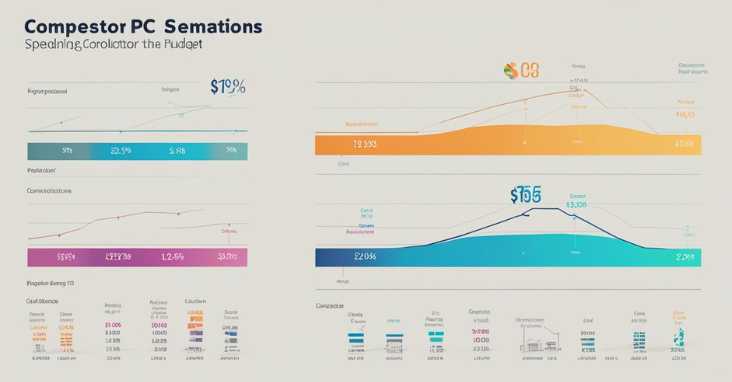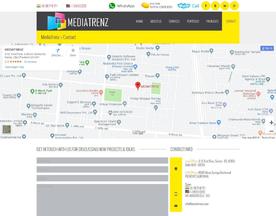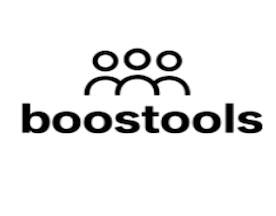What is a ppc competitor analysis ? PPC competitor analysis is assessing rivals’ paid search strategies to identify strengths, weaknesses, and opportunities for your campaigns.
PPC (Pay-Per-Click) advertising is a popular and effective way for businesses to drive traffic to their websites and generate leads. However, in today’s competitive digital landscape, it’s not enough to simply set up a PPC campaign and hope for the best. To be successful, businesses need to have a deep understanding of their competitors and how they’re approaching PPC advertising. This is where PPC competitor analysis comes in.

PPC competitor analysis is the process of researching and analyzing the PPC advertising strategies of your competitors to gain insights and identify opportunities for improvement in your own campaigns. By understanding what your competitors are doing well and where they’re falling short, you can make informed decisions about your own PPC strategy and stay ahead of the competition. This can include analyzing their ad copy, keywords, targeting, and budget, among other factors.
Understanding PPC competitor analysis is essential for any business looking to succeed in the crowded world of PPC advertising. By taking a strategic, data-driven approach to your PPC campaigns, you can improve your ROI and drive more traffic to your website. In the following article, we’ll explore the key components of PPC competitor analysis, including how to identify your competitors, analyze their ad campaigns, and leverage data and AI to gain a competitive edge. We’ll also provide tips for optimizing your own PPC campaigns and tools for advanced competitor analysis.
Key Takeaways
- PPC competitor analysis is the process of researching and analyzing the PPC advertising strategies of your competitors to gain insights and identify opportunities for improvement in your own campaigns.
- By understanding what your competitors are doing well and where they’re falling short, you can make informed decisions about your own PPC strategy and stay ahead of the competition.
- Key components of PPC competitor analysis include identifying your competitors, analyzing their ad campaigns, and leveraging data and AI to gain a competitive edge.
Understanding PPC Competitor Analysis
Defining PPC Competitor Analysis
PPC competitor analysis is the process of analyzing the advertising strategies of your competitors in order to gain insights and opportunities for your own PPC campaigns. This involves studying your competitors’ ad copy, landing pages, keywords, bidding strategies, and other factors that contribute to their success in PPC advertising.
By analyzing your competitors, you can identify gaps in their strategies that you can capitalize on, as well as areas where they are outperforming you that you can improve upon. This can help you to optimize your own campaigns and increase your ROI.
Importance of PPC Competitor Analysis
PPC competitor analysis is essential for staying competitive in today’s digital landscape. By understanding what your competitors are doing, you can stay ahead of the curve and anticipate changes in the market. This can help you to identify new opportunities for growth and stay on top of emerging trends.
Furthermore, by analyzing your competitors, you can gain valuable insights into your own target audience. By understanding what messaging and tactics are resonating with your competitors’ audience, you can refine your own messaging and targeting to better reach your own audience.
One great resource for conducting PPC competitor analysis is SEMrush, a powerful tool that allows you to analyze your competitors’ ad copy, landing pages, and keywords, as well as track their performance over time. By using tools like SEMrush, you can gain a competitive edge and stay ahead of the game in the world of PPC advertising.
Identifying Your PPC Competitors
When it comes to PPC advertising, identifying your competitors is crucial to developing an effective strategy. By understanding who your competitors are and what they are doing, you can gain valuable insights into the market and adjust your own approach accordingly. In this section, we will explore some tools and techniques for identifying your PPC competitors.
Tools for Identifying Competitors
One of the easiest ways to identify your PPC competitors is to use Google. Simply search for your target keywords and take note of the ads that appear at the top of the search results. These ads are likely being run by your competitors, and can provide valuable information about their PPC strategy.
Another useful tool for identifying competitors is SEMrush. This tool allows you to enter your website or target keywords and see a list of your top competitors. You can then analyze their PPC campaigns and gain insights into their strategy.
Analyzing Competitor PPC Presence
Once you have identified your competitors, it’s important to analyze their PPC presence. This includes looking at their ad copy, landing pages, and overall strategy. By doing this, you can gain insights into what is working for them and adjust your own approach accordingly.
One key area to focus on is ad copy. Look at the language and tone your competitors are using in their ads, and try to identify any patterns or trends. This can help you develop your own ad copy that resonates with your target audience.
Another important area to analyze is landing pages. Look at the design, messaging, and overall user experience of your competitors’ landing pages. This can help you identify areas where you can improve your own landing pages and increase conversions.
In conclusion, identifying your PPC competitors is a crucial step in developing an effective strategy. By using tools like Google and SEMrush, and analyzing your competitors’ PPC presence, you can gain valuable insights into the market and adjust your approach accordingly. For more information on PPC competitor analysis, check out this resource.
Analyzing Competitor Ad Campaigns
When it comes to PPC competitor analysis, one of the most critical aspects is analyzing competitor ad campaigns. By evaluating your competitors’ ad campaigns, you can gain valuable insights into their ad copy, messaging, landing pages, bidding strategies, and advertising strategies.
Evaluating Ad Copy and Messaging
Analyzing your competitors’ ad copy and messaging is crucial to understand how they are positioning themselves in the market. By examining the language, tone, and messaging of their ads, you can identify their unique selling propositions (USPs) and determine how they are differentiating themselves from other competitors. You can also identify the pain points they are addressing and how they are solving their customers’ problems.
One way to evaluate your competitors’ ad copy is to use tools like SEMrush or SpyFu, which allow you to analyze their ad copy and identify the keywords they are targeting. You can also use Google Ads’ Ad Preview and Diagnosis tool to see how their ads are appearing in search results.
Assessing Landing Page Effectiveness
Another critical aspect of analyzing competitor ad campaigns is assessing their landing page effectiveness. By examining their landing pages, you can determine how well they are converting their traffic into leads or sales. You can also identify the elements that are contributing to their conversion rates, such as the page design, copy, and call-to-action (CTA) placement.
To evaluate your competitors’ landing pages, you can use tools like Unbounce or Instapage, which allow you to analyze their landing page design, copy, and CTAs. You can also use Google’s PageSpeed Insights tool to assess their page speed and mobile-friendliness.
Understanding Bidding Strategies
Finally, analyzing your competitors’ bidding strategies is essential to determine how they are allocating their ad spend. By examining their bidding strategies, you can identify the keywords they are targeting, the ad positions they are bidding on, and the bidding strategies they are using, such as manual bidding or automated bidding.
To evaluate your competitors’ bidding strategies, you can use tools like Google’s Auction Insights report, which allows you to compare your bidding performance against your competitors. You can also use tools like AdEspresso or Adalysis, which provide advanced bidding strategies and optimization recommendations.
By analyzing your competitors’ ad campaigns, you can gain valuable insights into their ad copy, messaging, landing pages, and bidding strategies. These insights can help you refine your own PPC strategy and improve your ad performance. For more information on PPC competitor analysis, check out this article.
Keyword Analysis and Opportunities

Identifying Competitor Keywords
One of the most important aspects of PPC competitor analysis is identifying the keywords that your competitors are targeting. This information can give you a better understanding of their ad strategy and help you identify new opportunities for your own campaigns.
There are several tools available for identifying competitor keywords, including Google Ads, SpyFu, SEMrush, and Ahrefs. These tools allow you to enter your competitor’s website or domain and see the keywords that they are targeting in their PPC campaigns.
You can also use these tools to see the ad copy and landing pages that your competitors are using for each keyword. This information can give you insights into their messaging and help you develop your own ad copy and landing pages.
Finding Keyword Gaps and Trends
Once you have identified your competitor’s keywords, you can use that information to find new opportunities for your own campaigns. One way to do this is to look for gaps in your competitor’s keyword strategy. These are keywords that your competitors are not targeting but that are relevant to your business.
You can also use keyword research tools to identify new trends and opportunities in your industry. For example, if you are in the fitness industry, you may notice that there is a growing trend in at-home workouts. By targeting keywords related to this trend, you can reach new audiences and stay ahead of your competitors.
To find these opportunities, you can use tools like Google Trends, which allows you to see how search volume for specific keywords has changed over time. You can also use keyword research tools like SEMrush and Ahrefs to identify new keywords that are relevant to your business.
Overall, keyword analysis is a critical component of PPC competitor analysis. By identifying your competitor’s keywords and finding new opportunities for your own campaigns, you can stay ahead of the competition and drive better results for your business.
Here is a great resource for more information on PPC competitor analysis.
Assessing Competitor Targeting and Positioning

When it comes to PPC advertising, competitor analysis is a crucial part of any successful campaign. Assessing competitor targeting and positioning can provide valuable insights into what strategies are working for others in the industry and help to inform your own approach.
Audience Targeting Techniques
One key aspect to consider when analyzing your competitors’ PPC campaigns is their audience targeting techniques. By examining who they are targeting with their ads, you can gain a better understanding of the demographics and interests of their target audience. This information can then be used to refine your own targeting strategy and ensure that your ads are reaching the right people.
Some common audience targeting techniques used in PPC advertising include:
- Keyword targeting: This involves targeting specific keywords that are relevant to your product or service.
- Location targeting: This involves targeting specific geographic locations where your target audience is located.
- Demographic targeting: This involves targeting specific demographics such as age, gender, and income level.
By analyzing your competitors’ targeting techniques, you can identify areas where you may be able to improve your own targeting strategy and gain a competitive advantage.
Ad Position and Visibility
Another important aspect to consider when assessing competitor targeting and positioning is their ad position and visibility. This refers to where their ads are appearing on the search engine results page (SERP) and how visible they are to users.
Typically, the higher an ad appears on the SERP, the more visible it is to users and the more likely they are to click on it. By analyzing where your competitors’ ads are appearing on the SERP, you can identify areas where you may need to improve your own ad positioning in order to increase visibility and drive more clicks.
It’s also important to consider the value proposition of your competitors’ ads. What unique benefits are they offering to their target audience? By analyzing this information, you can identify areas where you may be able to improve your own ad copy and value proposition to better compete in the marketplace.
One external resource that can provide valuable insights into competitor analysis for PPC advertising is SEMrush, a leading digital marketing tool that offers a range of features for analyzing competitor strategies across various channels.
Budgets and Spending Analysis

Estimating Competitor Ad Spend
One of the key aspects of PPC competitor analysis is estimating your competitor’s ad spend. This can be a valuable metric to understand as it can help you determine the level of investment your competitors are making in their PPC campaigns. To estimate competitor ad spend, you can use tools like SEMRush or SpyFu. These tools can provide you with an estimate of your competitor’s monthly ad spend.
It’s important to note that these estimates are not always accurate and should be taken with a grain of salt. However, they can provide you with a general idea of your competitor’s investment in PPC advertising.
Analyzing Budget Allocation
Another important aspect of PPC competitor analysis is analyzing budget allocation. This involves looking at how your competitors are allocating their budget across different campaigns, ad groups, and keywords. By analyzing budget allocation, you can gain insights into which campaigns and keywords your competitors are prioritizing.
To analyze budget allocation, you can use tools like Google Ads or Bing Ads. These platforms provide you with detailed reports on how your competitors are spending their PPC budget. You can use this information to identify opportunities to improve your own PPC campaigns and stay ahead of your competitors.
Overall, understanding your competitor’s budgets and spending habits is a crucial part of PPC competitor analysis. By estimating your competitor’s ad spend and analyzing their budget allocation, you can gain valuable insights into their PPC strategy and use this information to improve your own campaigns. For more information on budget and spending analysis, check out this helpful resource.
Performance Metrics and Benchmarking

When conducting a PPC competitor analysis, it is important to focus on performance metrics and benchmarking. By monitoring key metrics and comparing them to industry benchmarks, businesses can gain valuable insights into their competitors’ strategies and identify areas for improvement in their own campaigns.
Key PPC Metrics to Monitor
There are several performance metrics that businesses should monitor when conducting a PPC competitor analysis. These include:
- Clicks: The number of clicks that an ad receives can provide insight into its relevance and effectiveness.
- Impressions: The number of times an ad is displayed can give an indication of its reach and visibility.
- Click-through rate (CTR): The percentage of clicks divided by the number of impressions can help gauge the effectiveness of an ad.
- Cost per click (CPC): The average cost of each click can help businesses determine the competitiveness of their bids.
- Conversion rate: The percentage of clicks that result in a desired action, such as a sale or lead, can help measure the effectiveness of a campaign.
By monitoring these metrics, businesses can identify trends and patterns in their competitors’ campaigns and adjust their own strategies accordingly.
Competitive Benchmarking
Benchmarking is the process of comparing a business’s performance metrics to industry standards or competitors’ metrics. By benchmarking their PPC campaigns against their competitors’, businesses can gain valuable insights into areas for improvement and potential opportunities.
When conducting competitive benchmarking, businesses should consider factors such as:
- Industry benchmarks: Industry benchmarks can provide a baseline for comparison and help businesses understand how their campaigns stack up against the competition.
- Competitor metrics: By analyzing their competitors’ metrics, businesses can identify areas for improvement and potential opportunities.
- Ad copy and creative: Analyzing competitors’ ad copy and creative can provide insights into their messaging and branding strategies.
- Landing pages: Examining competitors’ landing pages can provide insights into their conversion tactics and user experience.
By using competitive benchmarking to inform their PPC strategies, businesses can gain a competitive edge and improve their ROI.
One valuable resource for benchmarking is the Google Ads Benchmarking Tool, which provides industry benchmarks for key metrics such as CTR and conversion rate. Additionally, businesses can use tools such as SEMrush and SpyFu to analyze their competitors’ campaigns and identify areas for improvement.
Leveraging AI and Data for Competitive Analysis

When it comes to PPC competitor analysis, leveraging AI and data can provide businesses with a significant advantage. AI-driven insights and data-driven decision making can help businesses make informed decisions and gain a competitive edge in the market.
AI-Driven Insights for PPC Analysis
AI technology can help businesses gather and analyze data on their competitors’ PPC strategies. By using machine learning algorithms, AI can identify patterns in competitors’ ad copy, keywords, and targeting strategies. This can help businesses understand their competitors’ strengths and weaknesses and adjust their own PPC strategies accordingly.
AI can also help businesses monitor their competitors’ PPC campaigns in real-time. By analyzing data on ad performance, AI can identify trends and provide insights on what works and what doesn’t. This can help businesses optimize their own PPC campaigns and stay ahead of the competition.
Data-Driven Decision Making
Data is a crucial component of PPC competitor analysis. By gathering and analyzing data on their competitors’ PPC strategies, businesses can make informed decisions about their own campaigns.
Data can provide insights into competitors’ ad spend, targeting strategies, and ad performance. By analyzing this data, businesses can identify areas where they can improve their own campaigns and gain a competitive edge.
To make the most of their data, businesses should use tools like Google Ads and Google Analytics to track their competitors’ PPC campaigns. These tools can provide valuable insights into competitors’ ad performance and help businesses make data-driven decisions.
By leveraging AI and data, businesses can gain a deeper understanding of their competitors’ PPC strategies and make informed decisions about their own campaigns. This can help businesses stay ahead of the competition and achieve their PPC goals.
To learn more about leveraging AI and data for competitive analysis, check out this resource.
Optimizing Your PPC Campaigns

When it comes to PPC campaigns, optimizing them for better results is a continuous process. It involves analyzing and learning from competitor strategies, planning and executing campaigns, and monitoring and adjusting them based on performance. Here are some tips for optimizing your PPC campaigns:
Learning from Competitor Strategies
Analyzing your competitors’ strategies can help you identify gaps in your own campaigns and find new ways to improve your performance. Look at their ad copy, landing pages, keywords, targeting, and bidding strategies to see what’s working for them and what’s not. Use tools like SEMrush and SpyFu to gather data on your competitors’ campaigns and find opportunities for improvement.
Campaign Planning and Execution
A successful PPC campaign starts with a solid plan. Define your goals, target audience, budget, and KPIs before launching your campaign. Use keyword research tools like Google Keyword Planner and SEMrush to find relevant keywords and create ad groups. Write compelling ad copy and create landing pages that align with your ad messaging. Monitor your campaigns regularly and adjust them based on performance data.
To optimize your PPC campaigns, it’s important to stay up-to-date with industry trends and best practices. Check out resources like the PPC Hero blog and the Google Ads Help Center for tips and insights on how to improve your campaigns.
Remember, optimizing your PPC campaigns is an ongoing process. Continuously monitor and adjust your campaigns based on performance data to achieve better results.
Here is a link to PPC Hero, a high-authority resource for PPC campaign optimization.
Advanced PPC Competitor Analysis Tools

When it comes to conducting a thorough PPC competitor analysis, utilizing advanced tools and platforms can make all the difference. Here are some of the most effective tools for conducting advanced PPC competitor analysis:
Utilizing PPC Analysis Platforms
There are several PPC analysis platforms available that can help businesses gain a competitive edge. One such platform is SpyFu, which allows users to analyze their competitors’ PPC campaigns and identify their top-performing keywords. This platform also provides users with valuable insights into their competitors’ ad copy and landing pages.
Another popular PPC analysis platform is SEMrush. This tool provides users with a comprehensive overview of their competitors’ PPC campaigns, including their ad spend, top-performing keywords, and ad copy. SEMrush also offers a range of other features, such as backlink analysis and site auditing.
Competitor Research with SEM Tools
In addition to PPC analysis platforms, there are also several SEM tools that can be used to conduct competitor research. Ahrefs is one such tool, which provides users with valuable insights into their competitors’ organic search rankings, backlink profiles, and content marketing strategies. This tool can also be used to identify potential link-building opportunities.
Another useful SEM tool for competitor research is iSpionage. This platform allows users to analyze their competitors’ ad copy and landing pages, as well as their top-performing keywords. iSpionage also provides users with valuable insights into their competitors’ ad spend and click-through rates.
By utilizing these advanced PPC competitor analysis tools, businesses can gain valuable insights into their competitors’ strategies and gain a competitive edge. For more information on conducting a thorough PPC competitor analysis, check out this resource on 10 Essential PPC Competitor Analysis Tools.
Continuous Monitoring and Adaptation

PPC competitor analysis is an ongoing process that requires continuous monitoring and adaptation. This is because the competitive landscape is always evolving, and market trends can change rapidly. In order to stay ahead of the competition, it is important to keep a close eye on their activity and adapt your strategy accordingly.
Tracking Competitor Activity Over Time
One of the most important aspects of PPC competitor analysis is tracking their activity over time. This involves monitoring their ads, keywords, and landing pages on a regular basis. By doing so, you can identify trends and patterns in their strategy, and use this information to inform your own strategy.
There are several tools available that can help you with this task. For example, SpyFu is a popular tool that allows you to track your competitors’ keywords and ad copy over time. By using this tool, you can identify gaps in their strategy and capitalize on them.
Adapting to Market Changes and Trends
Another key aspect of PPC competitor analysis is adapting to market changes and trends. This involves keeping a close eye on organic search trends, as well as changes in the competitive landscape. By doing so, you can adjust your strategy to take advantage of new opportunities and stay ahead of the competition.
For example, if you notice that a particular keyword is becoming more popular in organic search, you may want to adjust your PPC strategy to target that keyword more aggressively. Similarly, if a new competitor enters the market, you may need to adjust your strategy to account for their presence.
Overall, continuous monitoring and adaptation are essential components of effective PPC competitor analysis. By tracking your competitors’ activity over time and adapting to market changes and trends, you can stay ahead of the competition and achieve your marketing goals.
Here is an external resource that provides more information on PPC competitor analysis.
Frequently Asked Questions

What are the essential components of a PPC competitor analysis?
A PPC competitor analysis should include an evaluation of the competitor’s keywords, ad copy, landing pages, targeting, and budget. By analyzing these components, you can gain insights into how your competitors are targeting their audience and what strategies they are using to attract customers.
How can I identify my competitors’ most successful PPC ads?
One way to identify your competitors’ most successful PPC ads is to use a tool like SEMrush or SpyFu. These tools allow you to see which ads are ranking the highest and receiving the most clicks. You can also analyze the ad copy and targeting strategies to gain insights into what is working for your competitors.
What tools are available for conducting an in-depth PPC competitor analysis?
There are several tools available for conducting an in-depth PPC competitor analysis, including SEMrush, SpyFu, Ahrefs, and Google Ads. These tools allow you to analyze your competitors’ keywords, ad copy, landing pages, and targeting strategies.
What metrics should I focus on when analyzing competitor PPC campaigns?
When analyzing competitor PPC campaigns, you should focus on metrics such as click-through rate (CTR), conversion rate, cost per click (CPC), and return on ad spend (ROAS). By analyzing these metrics, you can gain insights into how your competitors are performing and what strategies are working for them.
How can I use competitor PPC analysis to improve my own campaign strategy?
By analyzing your competitors’ PPC campaigns, you can gain insights into what strategies are working for them and how you can improve your own campaign strategy. For example, you can identify new keywords to target, improve your ad copy, or adjust your targeting to better reach your audience.
What strategies can I employ to outperform competitors in PPC advertising?
To outperform competitors in PPC advertising, you can focus on improving your ad copy, targeting, and landing pages. You can also experiment with different bidding strategies and adjust your budget to maximize your return on investment. Additionally, staying up-to-date with industry trends and best practices can help you stay ahead of the competition.
For more information on conducting a PPC competitor analysis, check out this article by WordStream.













